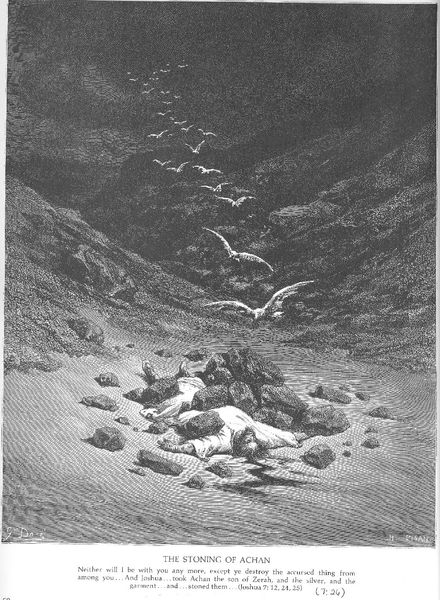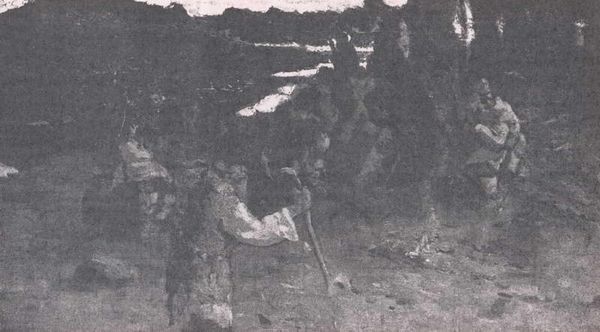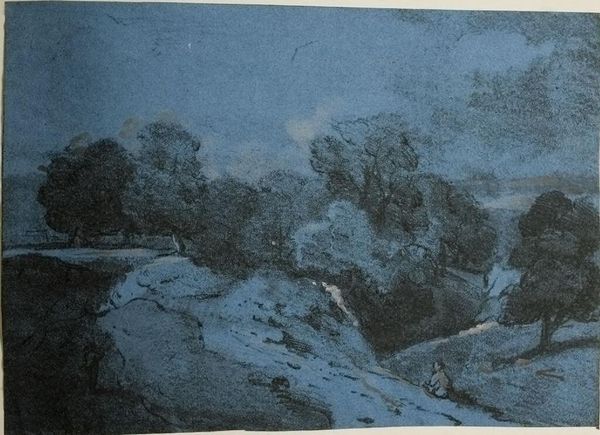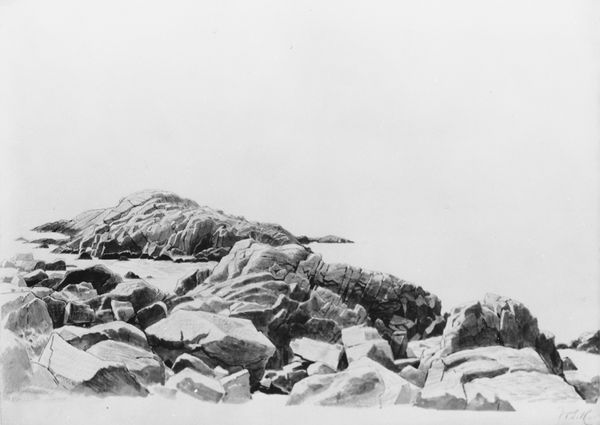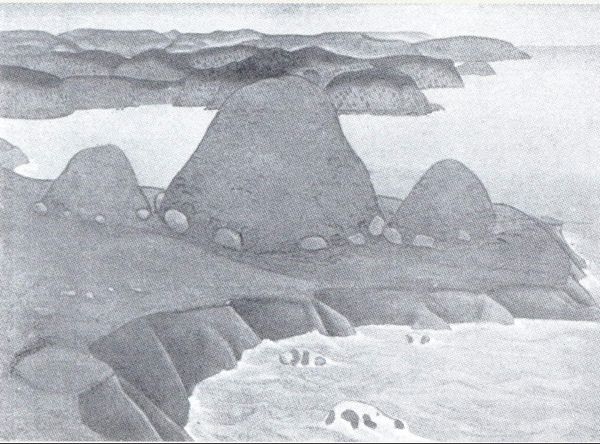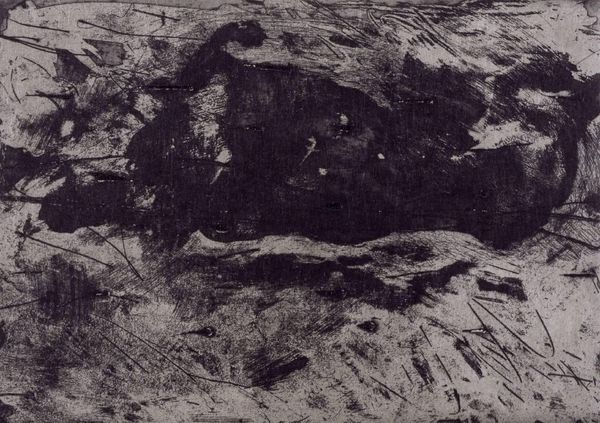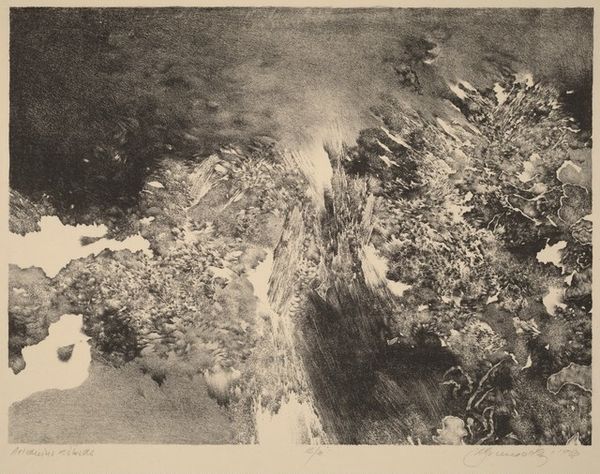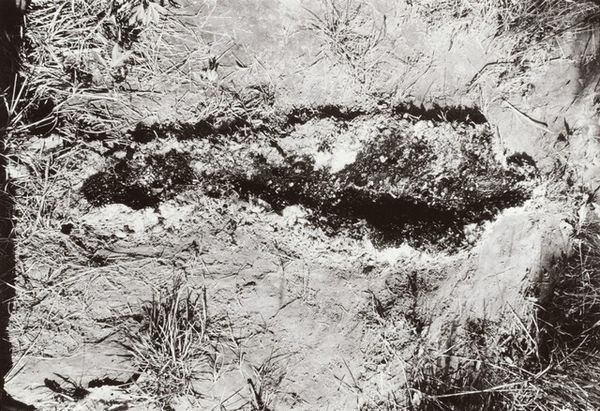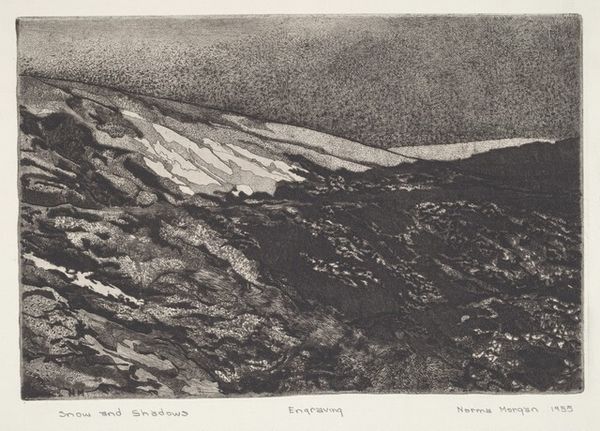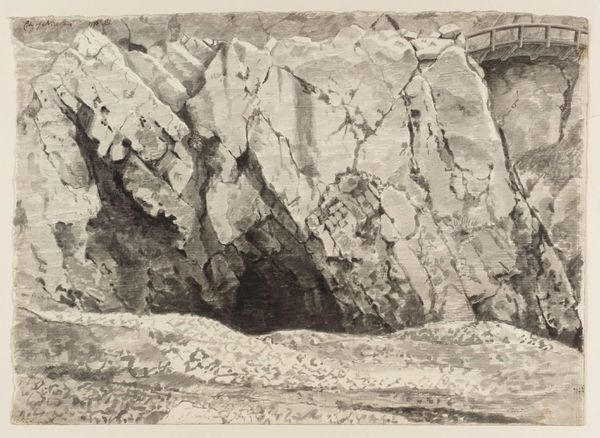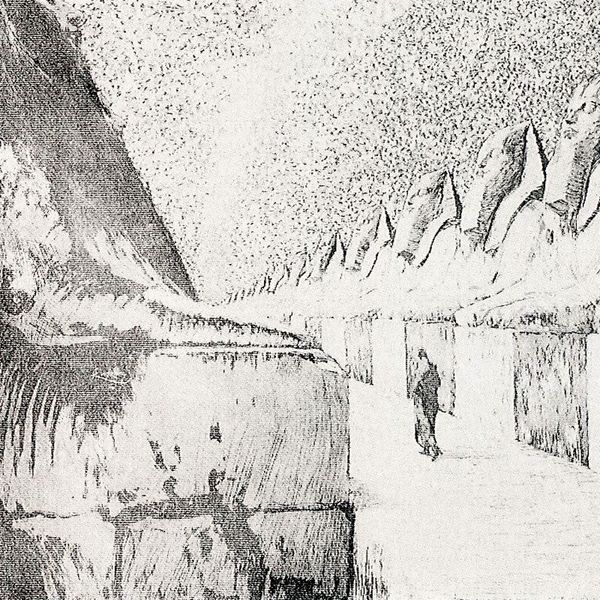
Copyright: Public domain
Curator: Here we have Nicholas Roerich's "Water Paternoster," a pencil drawing from 1905. Editor: My initial reaction is of intense cold and isolation. The monochromatic palette really emphasizes the harshness of a winter landscape. The textures are remarkable too. Curator: It's interesting that you pick up on the isolation. Roerich’s work often grapples with the themes of spirituality and humanity's connection to nature, but also societal transformation, reflecting the social and political anxieties of Russia at the turn of the century. "Water Paternoster," whose location is unfortunately recorded as destroyed, demonstrates Roerich’s ability to depict grandeur within an understated drawing. Editor: Seeing that figure nestled in the rocks changes the isolation somewhat; are they meant to embody resilience within a landscape that could care less about them? Or are they dwarfed by the scene? And does their action of observation invite or reject ours? I’m curious what role that single human figure is meant to play in such a scene, and in that context the piece’s destruction seems incredibly violent, almost symbolically representative of the obliteration of such fragile things. Curator: Perhaps they were meant to engage a dialogue between humankind and our environment, where this visual exchange fostered social evolution through an emotional connection. It's easy to forget the cultural turmoil happening at the time. Russia was on the verge of revolution. Editor: I think Roerich highlights how individual experiences within larger social upheavals become both deeply personal and universal. Even his artistic style plays on tension. He seems interested in depicting realism through line, light, and shadow while also maintaining some degree of fantasy in it all. Curator: Absolutely, that liminal space between realistic depiction and something else… Roerich found a way to capture both the immediacy of the landscape and hint at its greater social importance. His unique perspective encouraged his viewers to grapple with cultural heritage and imagine the future of art. Editor: I think looking at Roerich's drawing through that lens really illuminates the anxieties of the time. What at first seems like a simple, bleak landscape becomes this potent symbol of societal struggle. Curator: Agreed. It's a haunting reminder of the power of art to capture and convey complex emotions within broader cultural movements. Editor: And of the fragile, transient nature of artistic and human endeavors.
Comments
No comments
Be the first to comment and join the conversation on the ultimate creative platform.
